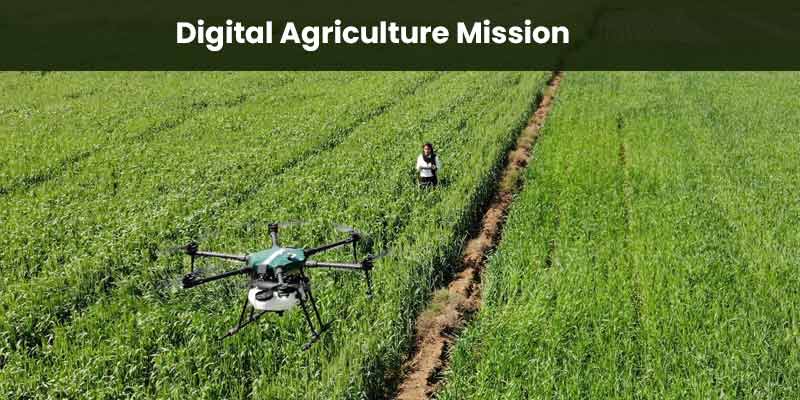- India
- Feb 12
- Sreesha V.M
Explainer - Digital Agriculture Mission
More than 2.05 crore farmer IDs have been generated under the Digital Agriculture Mission, Minister of State for Agriculture Ramnath Thakur said in a written reply to the Lok Sabha on February 11.
Digital Agriculture Mission
• The Digital Agriculture Mission, with an outlay of Rs 2,817 crore, seeks to enable a robust digital agriculture ecosystem in the country for driving innovative farmer-centric digital solutions and making available timely and reliable crop-related information to all the farmers in the country.
• It aims to establish a comprehensive farmer-centric digital and space-tech ecosystem to enhance transparency and efficiency in the execution of government programs while providing crucial support for evidence-based policy making for farmers’ welfare.
• The Mission envisages the creation of Digital Public Infrastructure for agriculture undertaken by central government/state governments.
• The Centre is providing administrative and technical support to all states for implementation of the mission.
Key Components of Digital Agriculture Mission
1) Digital Public Infrastructure (DPI) for Agriculture: Agristack, Krishi Decision Support System, Comprehensive Soil Fertility and Profile Maps.
a) Agristack is envisaged as a digital public good like Aadhaar for efficient and effective scheme/service delivery to the farmers. These IDs, created and maintained by state governments/Union Territories, will be linked to various farmer-related data, including land records, livestock ownership, crops sown, and benefits availed.
b) The Krishi Decision Support System will integrate remote sensing data on crops, soil, weather, and water resources into a comprehensive geospatial system.
c) Under Soil Profile Mapping, detailed soil profile maps on a 1:10,000 scale for approximately 142 million hectares of agricultural land have been envisaged, with 29 million hectares of soil profile inventory already being mapped.
2) Digital General Crop Estimation Survey (DGCES): It is designed to streamline and automate the entire General Crop Estimation Survey (GCES) process, encompassing state-level planning, recording the results of CCEs conducted on the field, and report generation. By digitising and enhancing the efficiency of CCEs, DGCES seeks to provide states/UTs with crop yield data that is not only accurate but also accessible in a timely manner.
3) Support to Mahalanobis National Crop Forecasting Centre (MNCFC): MNCFC has been established for applications of space and geospatial technology in various domains of agriculture. The Centre, named after the great Indian Statistician, Dr. Prashant Chandra Mahalanobis, was inaugurated on April 23, 2012.
4) Activities undertaken in erstwhile National e-Governance Plan (NeGP): A scheme (subsumed in the Mission) which includes development & maintenance of IT infrastructure/application of Department of Agriculture and Farmers Welfare and support to states, academic /research institutions for IT initiatives.
Key benefits of the mission:
i) Digital authentication for accessing services and benefits, reducing paperwork and the need for physical visits.
ii) Enhanced efficiency and transparency in government schemes, crop insurance, and loan systems through accurate data on crop area and yield.
iii) Crop map generation and monitoring for better disaster response and insurance claims.
iv) Development of digital infrastructure to optimize value chains and provide tailored advisory services for crop planning, health, pest management, and irrigation.
(The author is a trainer for Civil Services aspirants.)

